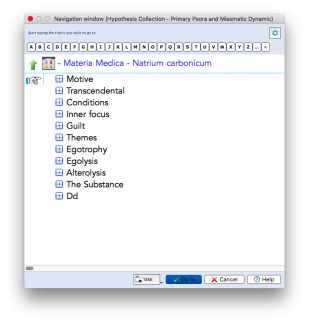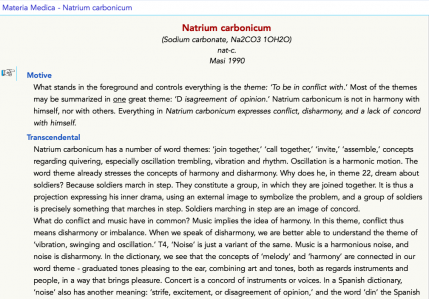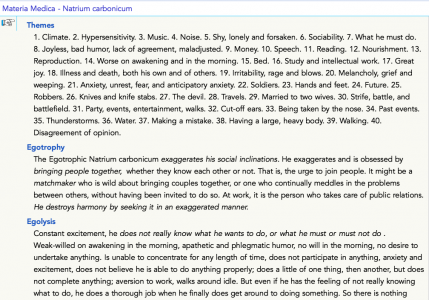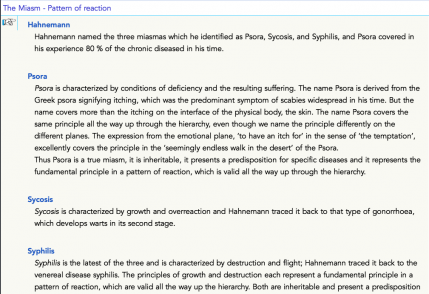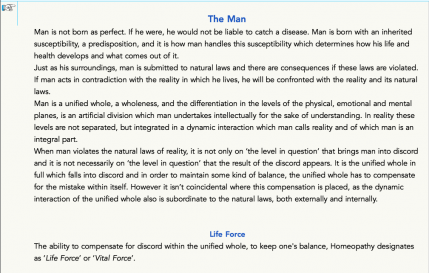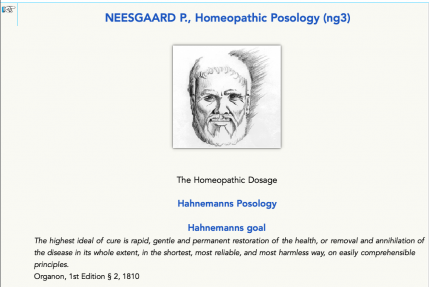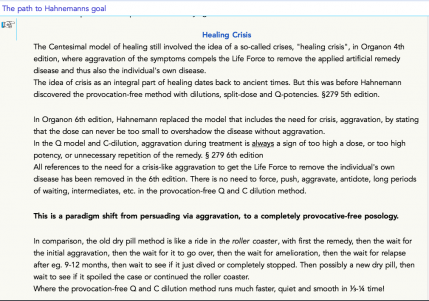Per Neesgaard
Graduated as a Classical Homeopath in 1984. He has had a full-time homeopathic practice for 35 years and has published several insightful works in RadarOpus.
Per Neesgaard has been teaching at his own School for Classical Homeopathy for 20 years and primarily studied the teachings of Vithoulkas and Masi. His latest work on Homeopathic Posology is a must-have for any serious student of Homeopathy who wishes to understand the different dosing methods outlined by Hahnemann and taken up later by different leading Homeopaths.
Summary of Per Neesgaard’s Classical Homeopathic insights available in RadarOpus software
Homeopathic Posology 
*** New release for 2021 - in English and Danish
Homeopathic Posology - The Homeopathic dosage
This is one of the first ever efforts to collect different opinions on posoloogy in one publication!
A must-have for any serious Homeopathy student!
Posology seems to be one of those grey areas that very often confuses students of Homeopathy - every practitioner and teacher seems to have a different model and way of approaching it. Per Neesgaard has done the Homeopathic community an immense service in bringing together the different teachings on posology in a most practical way.
The contents include vital information on:
- Single dose, the "wait and see" method, from Organon 4th edition
- Dilution and the "Adjusting the dose" method, "the middle path" from Organon 5th Edition
- Split dose and how the time of the healing process can be reduced to ½-⅓, from Organon 5th ed
- The Dry Dose Limitations, from Organon 5th Edition
- Practical use of dilution.
- Test Dose.
- Downgrade.
- Potency change, from Organon 5th & 6th edition
- Q potencies. End aggravation, from Organon 6th Edition
- Sensitivity and susceptibility.
- Constitution and temperament
- Factors in homeopathic dosing of remedies. Quality differences
Extract from Homeopathic Posology
The attitude to repeating the remedy
Another important change in Organon 5th edition is the attitude to repeating the remedy.
4th edition explained the principle of "single dose" and "wait and see" . . . Unfortunately, significant improvement does not always occur immediately after the 1st dose, particularly in complex chronic cases where improvement often comes slowly over months / years.
Hahnemann experimented through to the solution to this so that it could be done much faster, as stated in §246, under the following 3 assumptions:
- The correct remedy must be found from the totality of the symptoms
- and provided in an individually adjusted dose, in order not to overstimulate the Life Force. (1 grain in aqueous solution according to §285, 286, 287 and 288 5th edition)
- The remedy can then, if necessary, be repeated at appropriate intervals to accelerate the healing process without causing aggravation, provided that the degree of every dose deviate somewhat from the preceding and following.
Published by Similia Publishers, 56 p. A5, ISBN 87-983653-3-9
Homeopathic Materia Medica 
Hypothesis Collection - Primary Psora and Miasmatic dynamic
- A Dynamic Materia Medica structured to search and find the Leading Motives, Primary Themes, Modalities and Concepts with differentiation to other remedies with similar Leading Motives.
- Inspired by Neesgaard's learning with Masi, this excellent Materia Medica often contains material not present in any other contemporary work. See the example of Natrium carbonicum in the screenshot to the right.
- Another excellent example comes from the chapter on Laurocerasus, a remedy for which there is rather scant commentary in other Materia Medicas on its psycholgical aspects.
"Motive - Laurocerasus wants to make vitality and work a guarantee of his joy. He feels healthy after an exertion. Every activity increases his feeling of being alive. He seeks his happiness in the realization of his projects. He wants to give his vital force visible expression in the form of enormous activity. He is an extroverted person whose every mood can be read from his facial expressions and gestures.
Inner focus - Laurocerasus must display the results of his vital force and vitality to himself and all others. He keeps himself constantly busy, and does not allow himself to take any breaks, for he feels an inner urge to accomplish something. He lacks the inner tranquility needed to have a stable standpoint. His anxiety appears in all phases of life, and threatens his vitality at, for example, illness and ageing. Thus, he lacks the basis for being able to gather wisdom and experience. Laurocerasus walks along the edge of an abyss, as his joy requires constant activity. In the phase of exhaustion, collapse sets in.
Main Themes - 1) Joy, first of all, the joy his work gives him. Motion is good for him. He suffers at inactivity. 2) Uncertain standpoint. He does not stand on solid ground, but on the edge of an abyss, or in castles in the air. 3) Problems with expressing his feelings. He easily gets excited (emotional chorea), is sentimental, and feels forsaken. He feels frozen stiff, but suffers from oven heat. He dreams of fire, but lacks the desired life energy and joy of being alive. He dreams of the dead. Communication is difficult for him; his voice fails.
Homeopathic Philosophy
The Man, the Miasm, and the Modality - a Homeopathic Paradigm
- Homeopathic understanding of Man in Health and in ‘disease’
- Practical examples on applied Homeopathic cognition
- How Man can cure himself!
- When, why, and if the polarity of a modality can change depending on the miasmatic phase
- A notorious Paradigm for Classical Homeopathic treatment
- It describes the fundamental principles in a logical way
- It is used as introduction to the Education on Classical Homeopathy in Denmark
Published by Similia, 60 p. A4, ISBN 87-983653-1-2
Classical Homeopathy FAQs
Here are the most commonly asked questions about classic homeopathy andt heir answers:
What is classical homeopathy?
Classical homeopathy is a form of homeopathy in which the patient receives one substance, prepared in homeopathic form, to be treated. Classic homeopaths believe that a patient has an energetic state that one substance will mirror, and that substance may stand alone as the remedy.
How do classic homeopaths differ from others?
Non-classical homeopaths take the approach that different substances can be mixed and matched to treat a patient.

